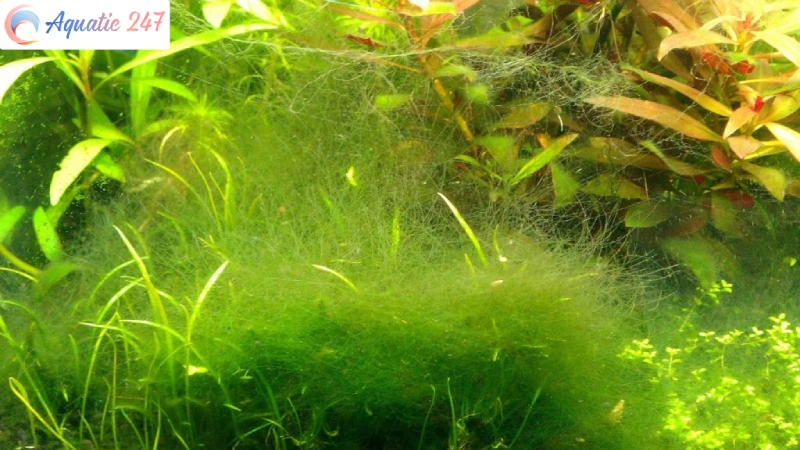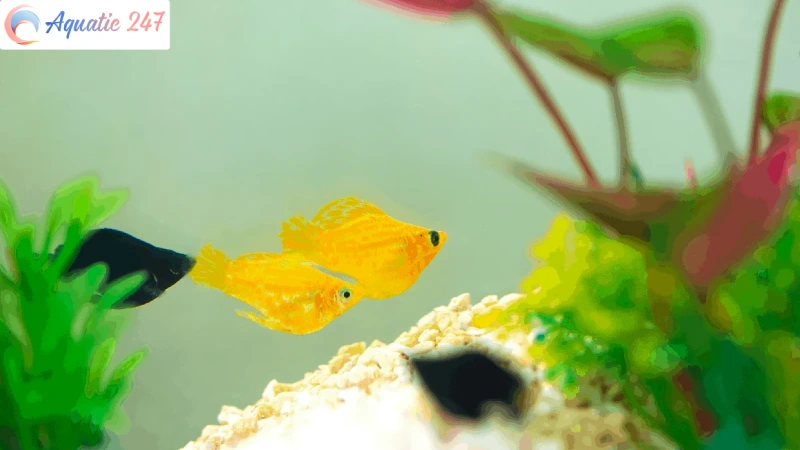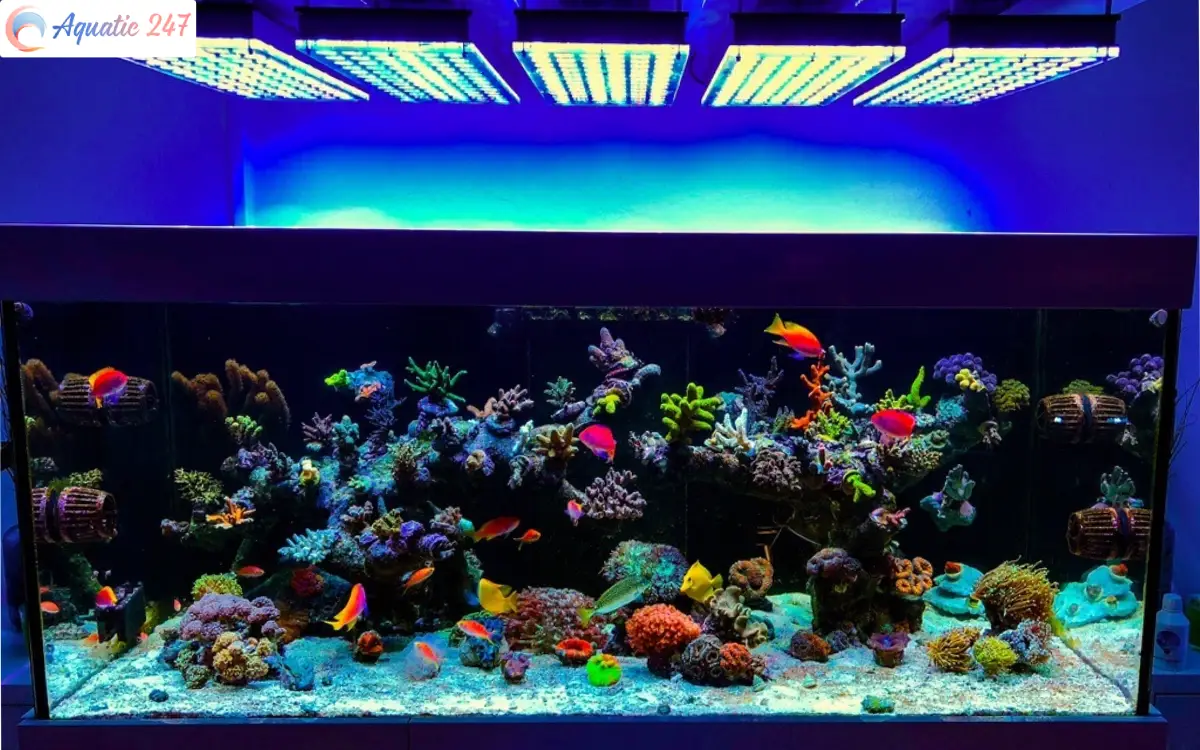Algae outbreaks are one of the most common concerns for aquarists since annoying green algae cover decorations, plants, and the walls of aquariums. You’re probably thinking: Does Molly eat algae? In this post, Aquatic 247 will delve deeper into the common Molly diet.
What are algae?
Algae is a diverse group of organisms with the ability to conduct photosynthesis. These organisms can thrive in freshwater lakes or saltwater oceans. They can also withstand a wide range of temperatures, oxygen or carbon dioxide concentrations, acidity, and turbidity.
It is almost impossible to not have algae in an aquarium. However, the overgrowth of algae makes the aquariums look dirty and sordid.
The good news is that algae growth can be reduced to an acceptable level. That is ecological balance. Does Molly eat algae? Continue reading this post to find the correct answer.

What is a Molly?
Mollies are resilient, tiny fish that can adapt to a variety of environments in the wild.
They can be found in:
- Freshwater
- Brackish
- Saline water
Mollyfish often live in regions with lush foliage, which they exploit to hide from predators. They shoal together in search of algae and small crustaceans.
However, certain varieties require you to add a small amount of salt to your tap water. Because they are a small breed of fish, they require only 30 gallons of water to live.
Molly can reach a height of 3 to 6 inches, depending on its variation. This fish is especially suggested for beginners because it is easy to care for. Furthermore, certain species of Molly have distinct shapes and colors that can brighten up your aquarium.
Does Molly eat algae?
Do mollies eat algae? The answer is yes. They are known in the aquarist’s circle as good algae-busters.
That is clear when they are introduced to a new tank with algae. They first consume the algae, and once the algae is gone, they begin seeking fish food.
Previously, you may have been required to clean your aquarium frequently, but with just 6 krill in a 30-gallon tank, algae can be cleared in just three days. After that, you probably won’t notice any algae blooming in your tank. The black version earned the most accolades from aquarium caretakers.

What are the common types of algae in aquariums?
Here are some types of aquarium algae.
Green spot algae
This species of algae grows on tank walls. They resemble hard green spots and are extremely tough to remove. Without a specialized approach, cleaning algae on the aquarium wall using a glass scraper takes a long time.
To prevent its spread, attempt to balance light and phosphates. Nerite snails are an effective initial line of defense against this algae.
Hair algae
Hair algae look like hair in plants. The problem with this algae is that it grows very quickly and is very difficult to remove. Reducing light and increasing fertilization will help reduce its fertility.
Black beard algae
Black beard algae growth, like that of other algae, is primarily caused by an imbalance in the aquarium. BBA can be caused by poor water quality, inadequate management, over-fertilization, low or fluctuating CO2 levels, excessive light, or a combination of these factors.
These algae flourish on driftwood, adorning fish tanks and plants. This is one of the most despised species of algae since few fish consume it. Unfortunately, mollusks do not consume BBA.
Brown diatom algae
Brown diatom algae appear in newly installed tanks after about 1 to 3 weeks because of their high silicate and phosphate content.
You can identify brown algae if you notice a brown coating on the surface of glass, aquatic plants, or decorations in your aquarium. Diatoms may appear darker in areas of the tank that get a lot of light.
Don’t be discouraged if you see brown algae, it’s quite common in new tanks! As the tank matures and maintenance is continued, diatom growth will decrease.

What is a common Molly diet?
Molly fish mostly ingest plant-based meals. The best fish food for mollies is algae, these fish prefer blanched vegetables such as lettuce, spinach, and zucchini.
Mollies are voracious feeders and will consume whatever you put in the aquarium. Because they are omnivores, flakes, pellets, and frozen diets should have a balanced mix of protein and veggies. Look for nutritionally balanced items from respected manufacturers!
Additionally, if you find them competing with other fish for food, consider spreading food around the tank so that other animals can eat.
In conclusion
Algae growth is not difficult to control. Just a few mollusks will do the easy job. Does Molly eat algae? The answer is definitely yes.
Although Molly does not kill algae as well as the Siamese algae eater, it can still be of great help. In addition to being beautiful varieties that can add color and appeal to your aquarium, it is also very useful and helpful in eradicating hair algae, one of the most problematic types of algae in aquariums.




